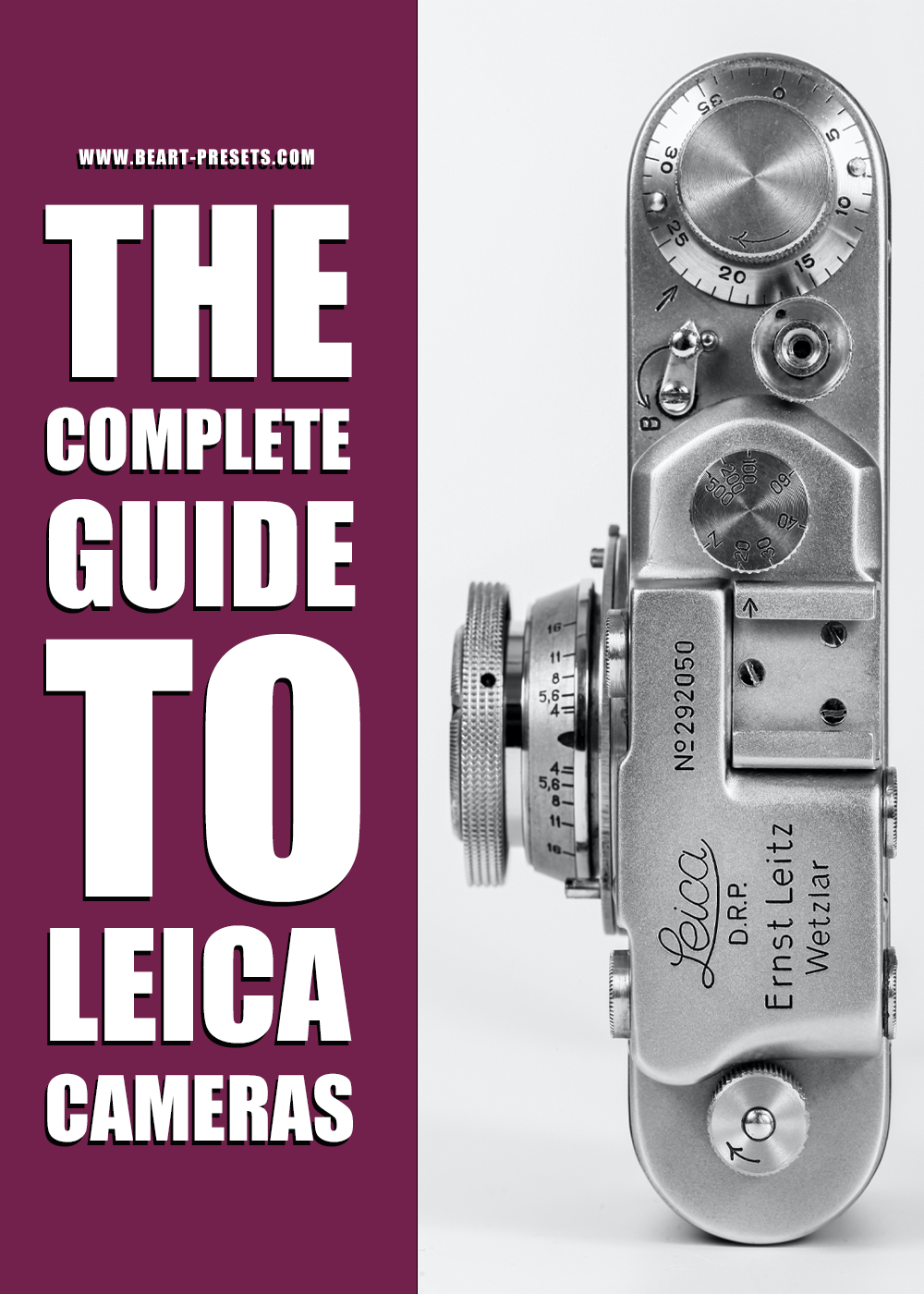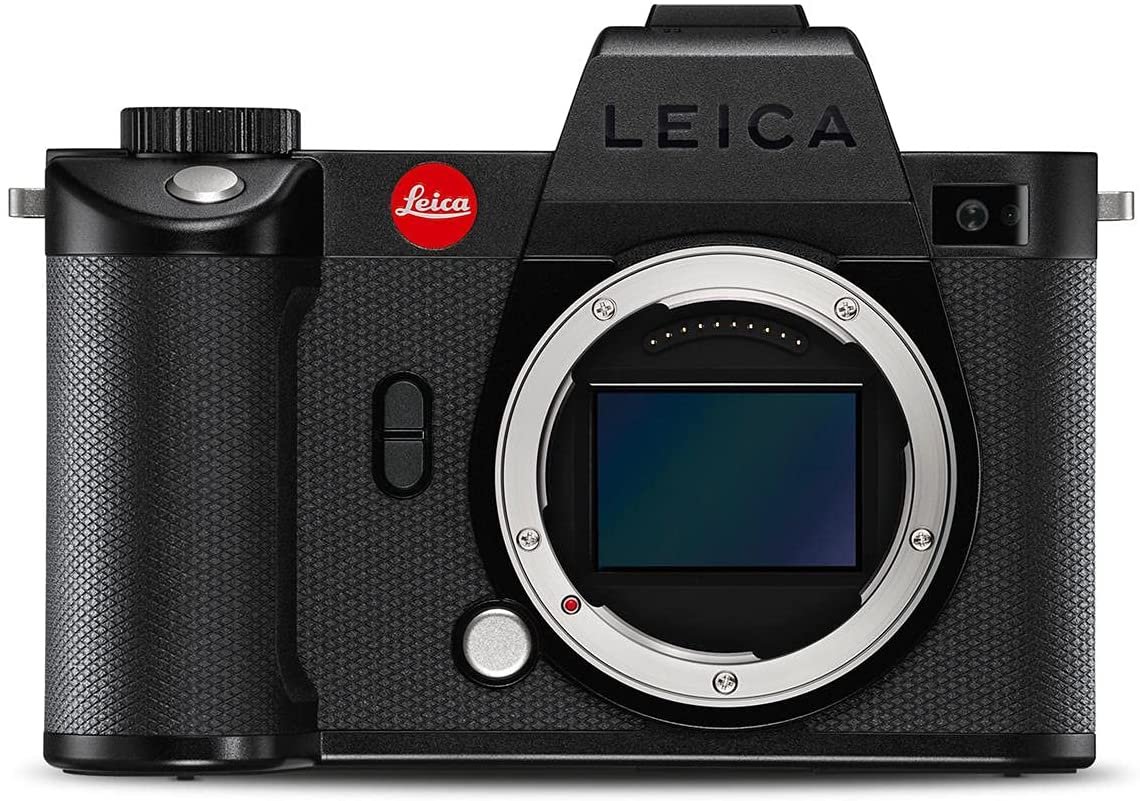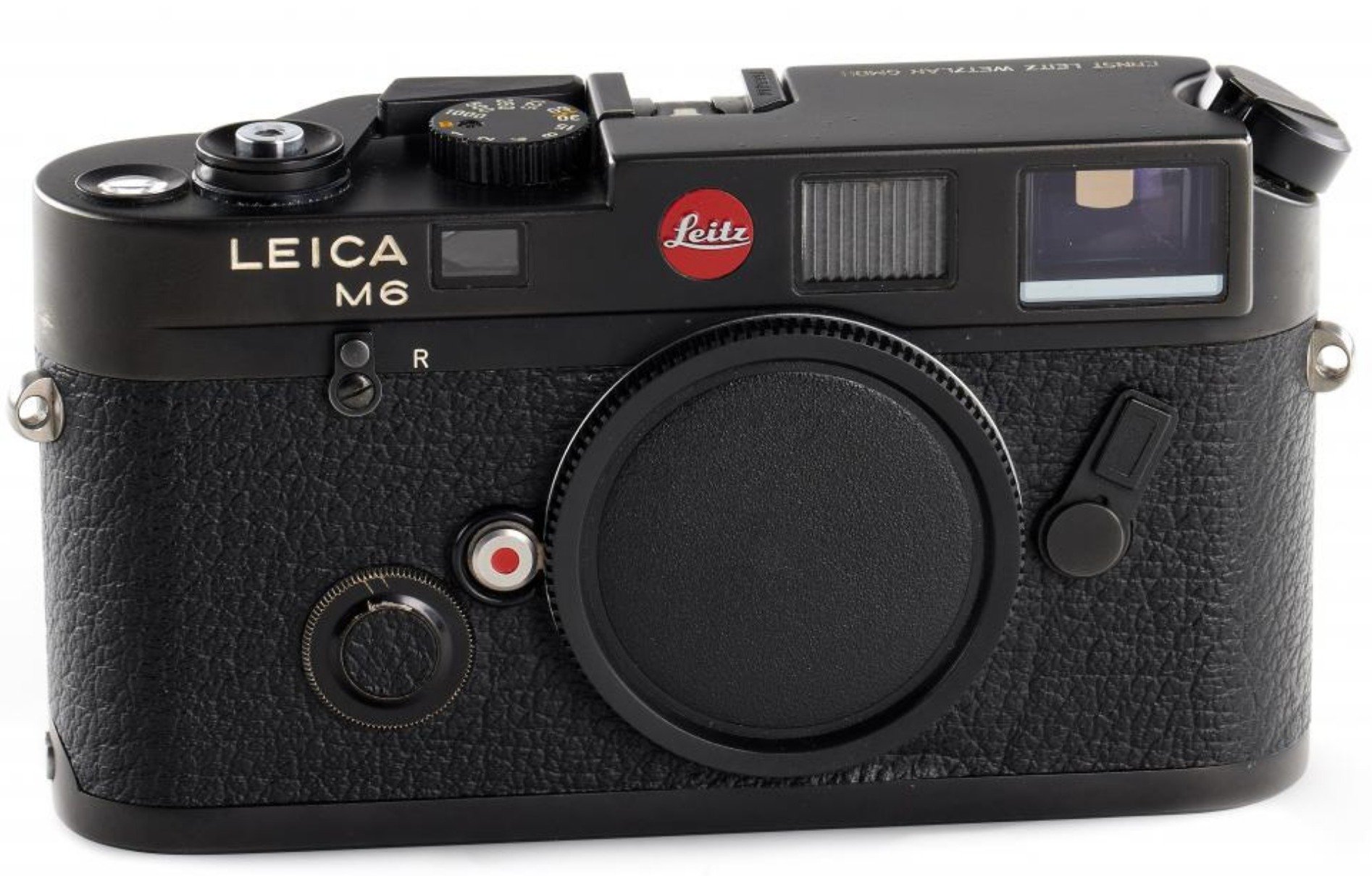The Complete Guide To Leica Cameras
Ask photographers which is the most iconic camera brand, and the majority would say Leica. Its name has long been synonymous with cutting-edge design and top-of-the-line engineering.
Get 30% Off With Promo Code “GET30”
〰️
Made With Love
〰️
Get 30% Off With Promo Code “GET30” 〰️ Made With Love 〰️
But it's also known for revolutionizing photography. In 1913, Oskar Barnack invented the first-ever small format camera - forever changing how we shoot images.
Today, Leica remains well-respected for its high-quality cameras. Alas, it's also known for its hefty price tag - although most Leica fans would say the cameras are well worth their prices.
We've put together a list of various Leica cameras by category. Budgets aside, this storied brand makes a camera for practically every type of photographer.
Things to know before selecting a Leica
Each camera series has its pros and cons. One essential feature to consider is lens compatibility. If you want to save a few dollars, consider buying a used Leica. An older model film or digital camera will save you money. Something worthy of note is that Leicas do tend to retain their value well. While buying a used Leica can save you money, don't expect to see the big markdowns you would see with other brands.
M-series: The M-mount camera was first introduced in the 1950s. To this day, Leica uses a similar (and popular) rangefinder design.
S-series: This is Leica's medium format line, which has larger, high-resolution sensors than the M-mount. This also means the S-series is larger and costlier. Its body size and weight make it more suitable for the studio.
SL-series: This is a traditional mirrorless camera. If you're looking for a full-frame with interchangeable lenses via the L-mount, pick up the SL-2. Its performance won't disappoint, and neither will its high-end lens options.
Q-series: The Q series use a fixed prime lens and a full-frame, high-resolution sensor. If you want a very compact camera, this one is for you!
Film cameras: Leica still produces film cameras, the M-A and MP, unlike many brands. These two remain popular cameras that only gain in value over time.
Best Leicas by Category
Best overall: Leica M11
This is Leica's latest flagship camera, and it comes with some very innovative new features, including a triple-resolution sensor. In our opinion, there's no argument that the M11 is at the very top of Leica's current line-up of cameras. If we had to select one Leica, this one would be it.
Specs:
Resolution: 60 megapixels
Lens: Leica M
Dimensions: 9.3" x 8.5" x 5.8″
Weight: 2.79 pounds
Pros:
It has an excellent feel with a superior quality build.
An electronic shutter can shoot as fast as 1/16,000th second.
Its high-resolution sensor captures lower-resolution images with better noise performance.
It's compatible with some of the best lenses made.
It has an improved multi-field meter that makes reading light simpler.
Cons:
This is not an inexpensive camera, but Leica is not known for its affordability. It's about $9,000.
It does not have video features.
We think that Leica's M11 is the creme de la creme of cameras for the serious photographer. You definitely get what you pay for in this camera, and that's basically excellence. Even though it doesn't shoot video or have Autofocus (it expects the serious photographer to do their own focusing), it handles superbly. Also, it is loaded with advanced technological features and upgrades on prior M-series versions:
There's a new 60-megapixel sensor with three different resolution settings.
You can insert a card or battery without removing the base plate.
There's 50-percent more battery power on a charge.
There is built-in storage for shooting without a card.
The electronic shutter can go to 1/16,000th second if you need short, quiet shooting.
Best mirrorless: Leica SL2
If you want a mirrorless Leica that comes with modern features and amenities, take a close look at the SL2. It certainly fits the bill while offering the superb quality you'd expect from a Leica.
Specs:
Resolution: 47.3 megapixels
Lens mount: Leica L
Dimensions: 5.75 x 4.21 x 1.65″
Weight: 1.84 pounds
Pros:
It offers genuinely excellent image quality.
It has a large electronic viewfinder.
There's in-body image stabilization.
It's one of the Leicas that has Autofocus. (Not all Leicas do.)
It has advanced video features.
Cons:
This is not a small camera.
Again, pricing isn't cheap.
The SL2 offers a typical Leica experience that will be familiar to Leica fans. It has the built-in DSLR style with a raised electronic viewfinder, and we like its large 3.2-inch touchscreen.
It has a 47.3-megapixel sensor with full autofocus capabilities, object tracking, and a substantial handgrip we love, especially given the camera's size.
Its L-mount was developed as a collaboration between Sigma, Panasonic, and Leica. But don't expect the lenses to be inexpensive. Consider this a high-end mirrorless camera.
Best compact: Leica Q2
If you're in the market for a compact Leica camera, we'd recommend the Leica Q2. It offers high-quality fixed-lens.
Specs:
Resolution: 47.3 megapixels
Lens mount: Fixed 28mm f/1.7
Dimensions: 5.1 x 3.1 x 3.6″
Weight: 1.58 pounds
Pros:
This compact camera offers incredible lens performance.
We love its tactile controls.
It has a beautifully designed body.
Cons:
If there's a downside to this camera, most people would say it's the look of its 28mm lens. It's not a deal-breaker for us, though.
Let's start right off with the remarkable size and weight of this all-in-one camera and lens. The Q2's body weight is an incredible 1.5-pounds, including its permanently affixed 28mm f/1.7 Summilux lens.
To its benefit, it has the same full-frame sensor inside as the advanced SL2, allowing it to produce exceptionally high-quality imagery. The Q2 operates a lot like a much smaller version of the Leica M, with a tactile shutter speed dial and an aperture ring on the lens.
It has a 1/500th second flash sync speed, which is impressively double that of full-sized interchangeable-lens cameras. If you're looking for a high-powered, compact camera ideal for lugging around, consider the Q2.
Best for professionals: Leica S3
This is a professional-quality medium-format camera - and Leica's most expensive in its current line-up. However, you definitely get what you pay for with this exceptional camera!
Specs:
Resolution: 64 megapixels
Lens mount: Leica S
Dimensions: 6.3 x 3.15 x 4.72″
Weight: 2.77 pounds
Pros:
It has a 30mm x 45mm sensor (making it larger than a typical full-frame).
There's an excellent optical viewfinder with zero lag.
It has a great weatherproofed body.
Cons:
This is a hefty-sized and heavy camera.
While Leicas are expensive, this one is really pricey!
The S3 is the DSLR camera that most professional photographers have at least heard of - if for no other reason than its superior quality and the hefty price tag of about $20,000! This is the big daddy of pro cameras.
The good news is that $20k will buy you a medium format DSLR with its own line of equally expensive lenses and the ability to produce extraordinary photography. Its sensor measures 30mm x 45mm, making it larger than a full frame.
There are also 64 megapixels of resolution and 15 stops of dynamic range. These features make it a great studio camera. While we'd say this isn't a camera you want to haul around doing street or landscape photography, it does have excellent weatherproofing. This camera offers advanced tethering features, popular with pros.
Best Leica film camera: Leica MP
We love a great film camera, and, luckily, Leica still produces one - the Leica MP! Its name stands for "Mechanical Perfection." And perfect it is!
Specs:
Resolution: 35mm film
Lens mount: Leica M
Dimensions: 5.47 x 3.15 x 1.65″
Weight: 1.5 pounds
Pros:
It has an all-mechanical operation.
It has Leica's classic design.
If needed, parts and services are readily available.
Cons:
There is no autofocus, but that might not be a con for many photographers.
Like all Leicas, this is not a cheap camera.
This beautifully understated film camera offers excellent quality with minimal bells and whistles. Even so, it's a great film camera. Its all-black, all-metal body with minimal branding makes it an inconspicuous camera to haul around in public.
It only requires a (small cell) battery to operate if you're using its built-in meter. It has a highly precise, almost entirely silent shutter. Yes, there's no autofocus. This is a fully manual, including the manual film advance lever. This camera is for those who want a classic photography experience.
Best vintage Leica film camera: Leica M6
This is another classic film camera that's a tad cheaper than more recent models.
Specs:
Resolution: 35mm film
Lens mount: Leica M
Dimensions: 5.43 in × 3.03 in × 1.32 in
Weight: 20.6 ounces
Pros:
This is a beautifully designed camera.
It's identical in function to modern camera bodies.
It's less expensive than the new models.
Cons:
Unfortunately, while being less expensive than newer models, its prices have risen dramatically over the years.
The M6 can save you significantly while still offering a nearly identical performance to even more expensive cameras. There are several M6 versions available, including one that provides TTL flash metering (that one will cost you more). We believe it's only worth the additional cost if you know you'll use that feature.
Conclusion
If you're in the market for a Leica, the overall best option is the M11, which will set you back around $9,000 for body only. It magically combines the unique experience of "rangefinder photography with great flexibility and state-of-the-art camera technology."
Since its new 1800 mAh battery stores 64% more power than its predecessors, you'll go much longer on a single charge. You can't beat convenience like that! You can shoot in Live View in JPG and DNG and choose between a 1.3x and 1.8x zoom factor of your focal length. Lastly, "...almost all M-Lenses produced can be mounted and used on today's Leica M11."





















